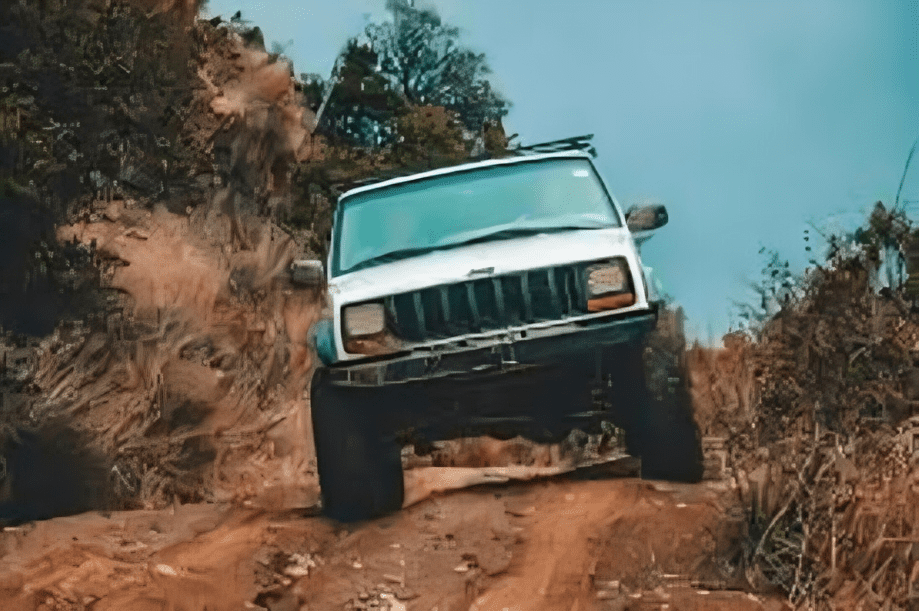Off road driving offers an unparalleled sense of adventure, freedom, and excitement. It allows you to explore rugged landscapes, conquer challenging terrains, and experience nature from a whole new perspective. However, off-roading can be intimidating for beginners, especially when you’re unfamiliar with the techniques, gear, and challenges involved. If you’re new to off-road driving and eager to dive into this thrilling experience, this beginner’s guide is for you. In this post, we’ll share essential tips and techniques to help you get started, build your confidence, and ensure a safe and enjoyable off-road adventure.
1. Understand Your Vehicle
Before you hit the trail, it’s crucial to get familiar with your vehicle and its off-road capabilities. Not all vehicles are designed for off-roading, so knowing what your car can and cannot handle is essential for a safe trip.
Key things to know:
- Ground clearance: The distance between your vehicle’s undercarriage and the ground affects its ability to drive over rocks, logs, and uneven surfaces.
- Drive mode: Many off road vehicles come with different drive modes (e.g., 4×4, AWD) that optimize performance for different terrains. Learn how to engage these modes and when to use them.
- Tires: Off-road tires are designed with deeper treads and reinforced sidewalls to provide better grip on rough terrain. If you’re using regular tires, consider upgrading for better performance.
Tip: Read your vehicle’s manual and consult with an expert if you’re unsure about your car’s off-road capabilities.
2. Know the Terrain
Understanding the terrain you’re about to drive on is crucial for a smooth and safe experience. Different terrains require different techniques, so it’s important to be prepared.
Types of terrain to familiarize yourself with:
- Mud: Mud can be tricky and often causes tires to get stuck. Learn how to manage tire pressure and throttle control to avoid getting bogged down.
- Sand: Driving in sand can be challenging due to its softness. Lowering tire pressure and driving at a steady speed will help prevent your vehicle from sinking.
- Rocky Trails: If you’re navigating rocky terrain, approach obstacles slowly and choose your path carefully. Avoid sudden movements to prevent damaging your undercarriage.
- Snow: Snow offers a different kind of challenge. Keep momentum steady, and use a low range for better control.
Tip: Start with easy, less challenging trails, and gradually build your experience as you gain confidence.
3. Learn the Basic Off Roading Techniques
Mastering a few key off road techniques will help you navigate various terrains with ease. Here are some essential skills to practice:
A. Climbing Hills: When driving uphill, avoid spinning the wheels. Instead, use steady throttle inputs to maintain traction. If your vehicle starts to lose traction, back down slowly and try again with a little more momentum.
B. Descending Hills: When going downhill, use engine braking (lower gear) to maintain control. Avoid using the brakes too much, as this can cause your wheels to lock and skid.
C. Crossing Water: If you need to cross a stream or river, first check the depth and current. Avoid crossing fast-moving water. Drive through slowly, with your windows closed and air intake sealed to prevent water from entering your engine.
D. Rock Crawling: When driving over rocks, go slowly and choose the best path for your vehicle. Avoid jerky movements to prevent damaging your suspension or undercarriage.
Tip: Practice these techniques in a safe, controlled environment before taking on more difficult trails.
4. Tire Pressure and Traction
One of the most important aspects of off roading is managing tire pressure. When driving on rough terrain, adjusting tire pressure can dramatically improve your vehicle’s traction.
Why tire pressure matters:
- Lowering tire pressure increases the tire’s surface area, giving you more grip on soft surfaces like sand and mud.
- On rocky terrain, slightly deflated tires help absorb shocks and prevent punctures.
- On hard-packed trails, higher tire pressure might be preferable for better fuel efficiency.
How to adjust tire pressure:
- Sand and Mud: Lower tire pressure (about 15-20 psi) for maximum traction.
- Rocky Terrain: Keep tire pressure at 25-30 psi, but experiment to find what works best.
- Hard-packed Trails: Maintain regular tire pressure for optimal control and fuel efficiency.
Tip: Always carry a portable air compressor to re-inflate tires after off roading.
5. Safety First: Always Be Prepared
Safety should always be your number one priority when off roading. Accidents and breakdowns can happen, especially in remote areas, so it’s essential to be prepared.
Essential safety gear:
- Seatbelt: Always wear your seatbelt, even if you’re driving at low speeds.
- Helmet: For more extreme off-roading (especially in rock crawling or motocross), a helmet can protect you from head injuries.
- Recovery Gear: Carry a recovery kit with items like tow straps, shackles, a winch, and a jack to help you get out of sticky situations.
- First-Aid Kit: Always have a fully stocked first-aid kit on hand in case of injury.
Tip: Off roading with a group is always safer. Don’t go alone, especially if you’re a beginner.
6. Respect Nature and Follow the Rules
Off roading can cause environmental damage if done irresponsibly. Always follow “Tread Lightly” principles and respect the natural landscapes you’re exploring.
Key guidelines to follow:
- Stick to designated trails to avoid causing damage to vegetation and wildlife.
- Don’t drive off established paths to minimize soil erosion.
- Respect posted signs, gates, and regulations to protect both the environment and yourself.
Tip: Leave the trail better than you found it dispose of trash properly, and avoid disturbing wildlife.
7. Know When to Turn Back
Not all off-road trails are meant for beginners. If you find yourself stuck, or if conditions worsen (e.g., heavy rain or snow), it’s better to turn back rather than risk damaging your vehicle or getting stranded.
Signs it might be time to turn back:
- Your vehicle is struggling to maintain traction.
- Weather conditions make the trail impassable.
- You’re unsure about the trail ahead or feel uncomfortable with the difficulty level.
Tip: Always have a plan for getting back to civilization in case of an emergency. Know the nearest exit points and trail head locations.
FAQs on Off-Road Driving for Beginners
1. What should I know about my vehicle before going off-road?
Before venturing off-road, it’s essential to understand your vehicle’s capabilities. Know the ground clearance, how to engage different drive modes (like 4×4 or AWD), and whether your tires are suitable for off-roading. Consider upgrading to off-road tires if needed.
2. What types of terrain should I be aware of?
Common off-road terrains include mud, sand, rocky trails, and snow. Each requires different techniques, such as adjusting tire pressure for mud and sand, using steady throttle for rocky terrain, and maintaining momentum on snow-covered trails.
3. What are the basic off-roading techniques I should practice?
Some key skills include:
- Climbing Hills: Use steady throttle inputs to avoid wheel spin.
- Descending Hills: Use engine braking and avoid overusing brakes.
- Crossing Water: Check water depth and current, drive slowly, and seal the air intake.
- Rock Crawling: Drive slowly and choose a safe path to avoid damage.
4. Why is tire pressure important when off-roading?
Adjusting tire pressure is critical for improving traction. Lower tire pressure (15-20 psi) gives better grip on soft terrain like mud and sand. For rocky terrain, 25-30 psi is optimal. Higher pressure is ideal for hard-packed trails to improve fuel efficiency.
5. What safety precautions should I take?
Always wear your seatbelt, and for more extreme off-roading, consider wearing a helmet. Carry essential recovery gear like tow straps, shackles, and a winch, as well as a fully stocked first-aid kit. Never go off-roading alone, especially if you’re a beginner.
6. How can I respect nature while off-roading?
Stick to designated trails, avoid driving off paths to prevent soil erosion, and respect local regulations. Make sure to dispose of trash properly and avoid disturbing wildlife to minimize environmental impact.
7. When should I turn back during an off-road adventure?
If your vehicle struggles to maintain traction, weather conditions worsen, or you feel uncomfortable with the trail’s difficulty, it’s best to turn back. Always have a plan to safely return to civilization in case of an emergency.
8. How can I ensure a safe and enjoyable off-road experience?
Start with easier trails, practice key techniques in controlled environments, and always prioritize safety. Equip your vehicle with the proper gear, and respect the environment for a fulfilling off-road adventure. Remember to respect the environment, prioritize safety, and have fun! Your off roading adventure awaits happy driving!










